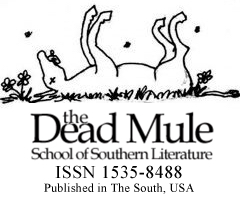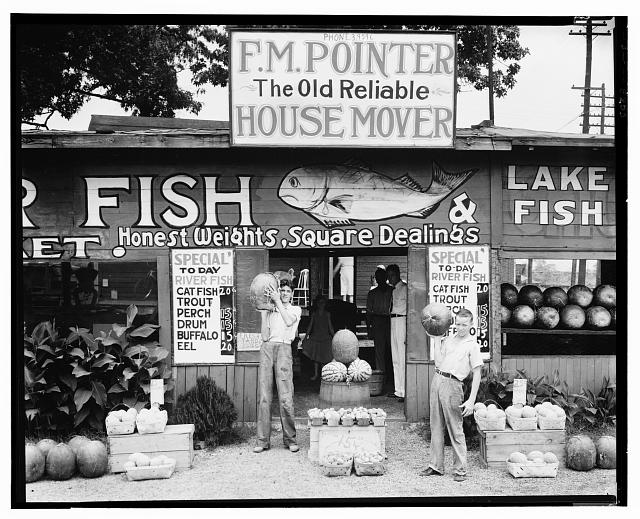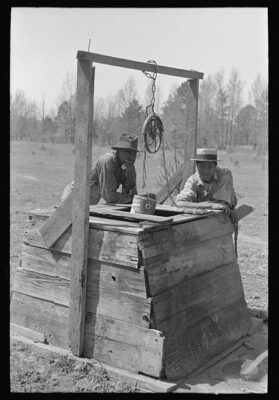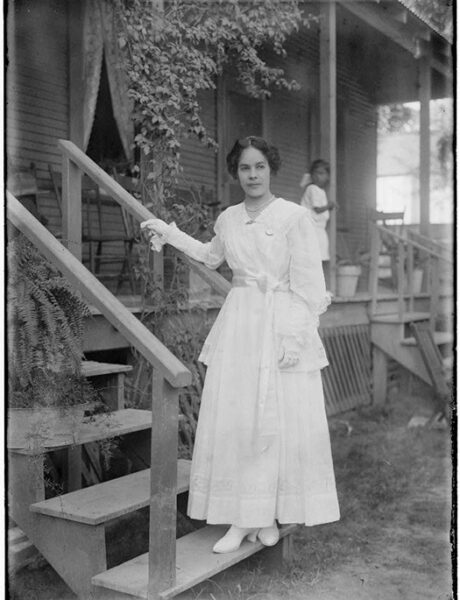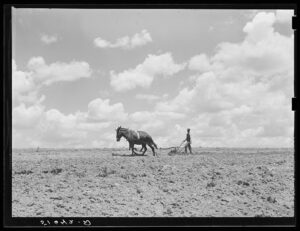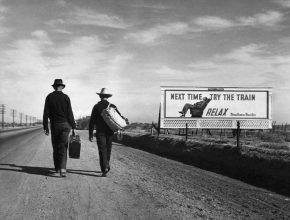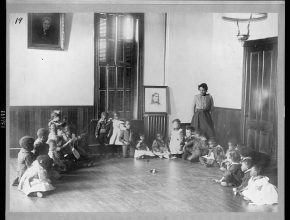Wounded Woods, Healing Trees
What do you get if white pine
and redwood hang on the same wall?
They both smell of rutting deer
and spring thaw, splashing aroma
against cathedral ceilings
blended into hypnotic nostalgia by
ceiling fans decorated with rattan and painted ducks,
their blades slicing smells like
mill knives de-heart the pine
and the monstrous, silent, ancient
redwoods, thick as twenty horses,
tall as a galloping herd.
Some of the old mountain men
with dull gray beards and liquid memories
like early floods say you can’t mix white and red,
instead you must
give each its place, like seasons.
I’ve met two of these old men, and I’ll
tell you this, they fear to watch
the cutting of the trees. To them,
the ax and wood are like thunder and darkness –
when they join in a capriccio echoes and dense
silence, no man can hide from the injured spirits which
inflate the leaves and stretch new branches from nothing.
The old ones don’t make fire on such nights
because the equilibrium of plant and
planet in rare instances balance breathing with
moments of insight some people laugh at.
Once I wanted to remodel an abandoned prospector’s cabin
with a dirt floor and a history. General Ulysses S. Grant
shot a rifle bullet into a thick round log
which forms part of the east wall. He
was a fool, the old ones say. He had no ear
for the quiet life which licks the air at
temperature changes.
You didn’t know that, did you?
At 47 degrees fahrenheit
the manzanita bush fills the
air with fragrance enough to tempt small
red foxes into their secret mating dance.
This happens only at elevations above
thirty-one hundred feet and below forty-seven hundred feet
and only during the months of April and May.
When the old ones saw this, they celebrated
because below the fertilized legs of the foxes
gold spilled from the red earth.
Once I dated a geologist who threw scrambled
eggs into my face at breakfast the morning
I told her this secret.
She didn’t believe.
She is one of those women who will put
redwood and white pine on the same wall,
miracle and science into the same back pack
for observation.
But the old ones knew better. They didn’t let me remodel the cabin.
I replaced the shingles with slabs of beveled cedar
I split myself, and I patched the walls
with mud from the mound of a beaver family
so that spirit mixed with my hands and
the cabin prayed for me.
I asked the geologist to marry me and
the old ones stopped talking to me, but
they burned small chips of aspen branches so that
the smoke might open my eyes; it’s full
of fingers, you know, aspen wood, but you must
burn it on nights of darkness and thunder
in order for its science to operate.
The geologist went to work for a lumber company,
and I bought a tent. I hiked
against the rapids flowing from the mountain’s stomach,
searching for the old ones who left a map,
drawn on white birch, using the burnt
tip of maple sticks to stain mystery into bark,
and beyond the solitude of forest
and the quiet of sunset at equinox
I seek the magic of love and thunder.
Night Train Serenade
I don’t mind the sound of the train at night,
its lonely whistle drifting through the walls
passing through my ears
like slender memory.
I don’t mind the steady rumble, either,
of the creosoted ties
reverberating within the crush of sharp granite stones
calling forth the throaty echo
of iron rails.
I don’t mind the bouncing springs
which flex like box-car suspenders
balancing rolling loads of lumber
and piles of captured wheat,
even though their images appear to me like ghosts.
In childhood I arranged
rusty nails on the track
and after my paper route, after the coal cars passed,
I spliced the flattened nails to oak branches with string
from an unwound baseball I hit so often
that the stitching of the cover tore.
The little rubber ball inside bounced higher than trees
if I threw it hard
against the new asphalt parking lot behind the bank.
Mary Louise grabbed it once
and threw it hard into the night,
but it crashed Mr. Stover’s kitchen window,
and we ran all the way to the dike
where we hid somewhere between
the silver September moonlight resting on the tracks
and the watery gray darkness of the August river.
Somewhere in the weeds of the river bank
frogs made those short little croaks with long silences between,
the ones they make in late summer
so that when you lay in the grass on the city side of the dike
you can’t hear the frogs when a train goes by,
but if you lay on the river side you can.
I guess because we were scared
Mary Louise let me kiss her
one of those eyes-closed kisses
that makes the outside and the inside of your skin tickle.
We never kissed again, and I’ve tried to forget it,
but sometimes, at night, when the sounds of the train
slide through the walls like ghosts
and jiggle wispy images lose in my head,
I discover that
I don’t mind the memory,
and the warm blankets holding my skin
soften the rumble of the train.
A Carpenter’s Legacy
Virgil always signed his work.
Somewhere hidden in a wall
or the back of a cabinet
we signed our names and left the date
so one day another carpenter
would find us,
and we would pass our legacy
to another generation.
He wanted everything we built
to last one hundred years.
Some of my work has not lasted.
Some of my early work
was built on sand, some constructed in weeds;
only after many indignities of carelessness
did I learn to seek foundations of granite
and attention to time.
I look back upon the number of my days,
the walls I stood,
the roofs I framed:
I have spent the expanse of my body
in making things,
calling forth structure from wood and steel,
amassing a fortune of memories making
cabinets, doors,
windows, floors,
walls and ceilings.
Do these monuments justify my energy?
I wonder who, for instance,
sleeps under the roofs I built?
Are they dry? And safe?
Are the foundations of my family steady and robust?
Are the walls of my friendships plumb?
What is my life made from
if not the corridors I have built
between my burdens
and my loves?
